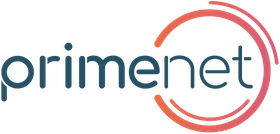The hybrid paradox
Hybrid working
Although offices are opening their doors again, organisations will never revert back to the pre-covid “work from office” situation. People got used to the flexibility of home office and want to keep this possibility, but at the same time, they concede missing personal interactions of their office environment.
As a company, how to cope with this paradox, and what are the ingredients of a successful hybrid model?
Communication: Agility and Interactivity are key
Internal communication is to be considered on various levels. It happens between co-workers within a specific department, in meetings, or as a casual discussion in front of the coffee machine. The lack of personal contact is one of the biggest downsides of working from home, say the workers themselves.
One of the main lessons of the pandemic is that internal communication is not limited to forwarding data, information or tasks. It is about belonging to a team and wanting to take a stake in a common journey.
The switch to a hybrid model should not be partial. When covid started, having people work from home almost from one day to another forced organization to transform their processes as a matter of emergency. Therefore, the main focus has been put on core business activities: setting up functional digital workplace, processes, and training. This transformation is still to be completed for internal communication, which requires a deep analysis and understanding of internal processes and channels that have not yet taken place in many companies. If this transformation is not completed and seen as a continuous process, information flows but also part of the company identity will get lost, and organisations will have increasing difficulties to reach their goals.
Working from home has put a stop to fluent exchanges between colleagues, mostly because it destroyed short-term availability and fast interactions. Technical problems added up to this, obstructing, even more, the flow of communication.
Now that people can flexibly decide from where to work, internal communication should be transparent and accessible anytime and from anywhere. Local events, online team meetings and feedback loops are possibilities to achieve this. It is crucial that any employee can play his part in the company values and culture, as they reflect what an organization stands for, from the inside and the outside.
How to find, lead and make remote workers thrive
The success of an organization directly depends on its teams. And building up teams able to thrive remotely is a tricky exercise, for which a company will need to completely re-think its hiring process. It is not only about assessing individual skills, but the specific conditions of a remote setup now need to be taken into account as well. People need to be able to manage interactions with colleagues evolving in different locations and time zones. A whole different ballgame than a shared physical office.
Once the hiring process is through comes the time for the onboarding. And here again, you cannot expect a newcomer to go through some company slides and ask questions as they come. Remember, short-term availability and fast interactions are things of the past. This means, onboarding processes also need to be re-thought and standardized, to be easily replicable, scalable and without real-time personal interactions. However, the long-term goal should remain to promote and encourage every worker according to his own skills and aspirations. This requires a close personal follow-up from a management perspective, as well as a wide offer around trainings and workshops, that should be actively and financially supported by the company.
Mistakes are not obstacles to success; they are part of it.
Trust is the master key to successful remote teams. The acceptance of possible mistakes that comes with remote work should be in everyone’s mind at any given time. And it should be taken for granted, that not everything will work out after one single try. Therefore, it will always be better to give your teams room for trial and error, rather than trying to polish your processes to make them “failure-proof”. Processes with no room for mistakes are generally so heavy that they tend to become even more toxic for the dynamic of the company.
Trust also means delegate tasks and decisions. Involving people in company decisions related to their department or tasks is key to their involvement and motivation. I know, this should be common sense anyway, but it takes another dimension among remote teams.
“Trust does not happen during meetings; it happens between the meetings.”
Simon Sinek
It is difficult to imagine how a team can grow together without the morning discussions during coffee breaks or over the air of an open space. The pandemic showed how many personal interactions are important, and how much people miss them now that they disappeared. Digital tools can help compensate for this void, with scheduled virtual coffees or online game evenings. Such activities are crucial for people to get to know and exchange with each other about other topics than angry customers or the dysfunctional new software.
Based on all that, the tools you will choose to support your transformation will determine its success or failure. Although it is impossible to have a complete overview of all of them, do not neglect that part and keep in mind that every hour or day spent on making a better decision will be worth it.
In a conclusion
This ongoing transformation that almost every organisation must go through is often underestimated. Priorities are set to business-critical processes and tools, whereas other aspects are being forgotten. Because they were taken for granted in an office environment or their absence is not yet directly visible and measurable.
A hybrid or remote workforce requires a completely new mindset. It requires to deeply re-think and re-design our processes. It is not something that time will fix, and people will just get used to.
If the second part of the transformation is neglected and incomplete, it will eventually have consequences on the company culture, values and performance.
